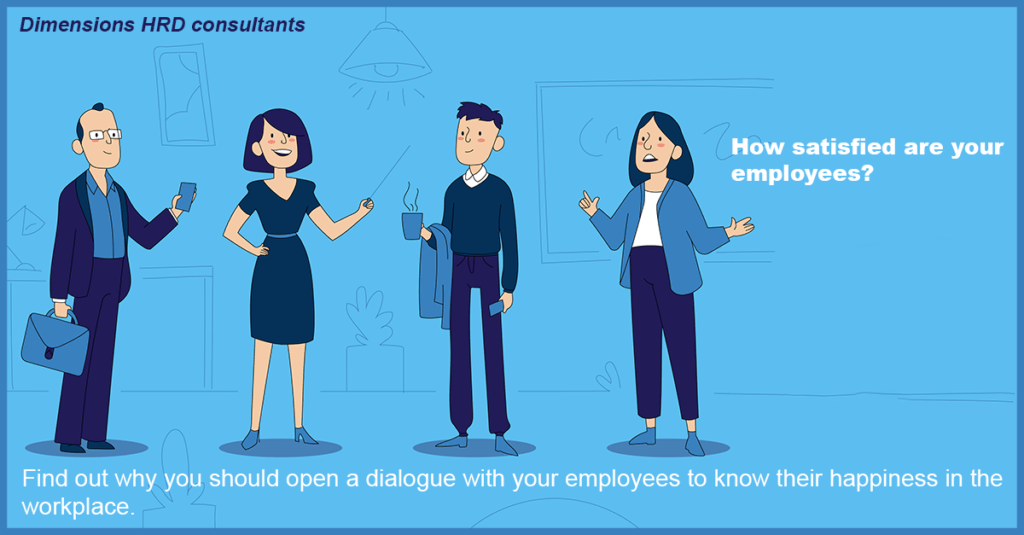Employee satisfaction or job satisfaction is one of the key goals of all HR personnel irrespective of what their individual KRAs are. A satisfied employee is not just a retained employee but an ambassador for the brand, internally and externally. Most companies today focus on workplace culture such as Flexible Working hours to create happy and productive employees.
The best way to measure staff satisfaction is to talk to them directly. There may be parts of the job that employees are not happy with, but other parts they enjoy; so if you want to ensure you have a highly motivated team, you need to know about both sides.
Tracking Employee Happiness
Happiness has a significant effect on staff turnover. Satisfied employees are happy employees but the long-term value is far greater than that. When a company has a high level of employee satisfaction their employees’ commitment towards their manager, peers and tasks is increased. Whether an employee is satisfied at work depends on a number of factors, including the opportunity to use his skills and talents, recognition for good work, development opportunities and the work environment. There are three ways you can measure employee engagement in an organization.
-
-
Having engagement measured by an employee engagement survey provider
-
Measuring employee engagement yourself
-
A hybrid approach in which annual engagement is measured by the survey provider while pulse engagement is measured by the company throughout the year.
-
How can you improve employee job satisfaction
-
-
-
Offer opportunities for learning
-
-
Employee growth is one of the most important aspects of engagement. Once employees feel like they have stagnated they will eventually get bored and look elsewhere for stimulation and new challenges. Keep star talent on board by offering them opportunities to grow in the career and the company. This could include training, a challenging promotion or a learning budget that allows employees to pursue outside interests.
-
-
-
Reward Performance
-
-
“Employees are no longer just working to live by paycheck to paycheck. They want to be in a healthy work environment. Recognizing your employee’s performance is going to motivate and empower them. Managers that take the time to highlight employee strengths become more productive in the workplace.”
-
-
-
Care About Employee Well-being
-
-
Showing employees that you genuinely care about their well-being is one of the most effective ways to increase job satisfaction.
-
-
-
Involve and Engage your Employees:
-
-
When you involve and engage your employees, it builds employee satisfaction. Teams that work together with involvement are happier and satisfied. The best way to encourage employees is to make them fully involved. To hear them out in need. To make them realize that they are equally important and their contribution and hard work are always appreciated
-
-
-
Strengthen employee relationships.
-
-
Job satisfaction is also connected to relationships that the employee has with coworkers. Use team building exercises to help develop and strengthen coworker relationships.
-
-
-
Work on The Culture.
-
-
The culture of an organization is influenced by the behaviors of its leadership. Employees empathize with each other and demand respectful treatment of all employees.
Implementing an employee’s happiness plan
Sitting with your employee to conduct a “happiness asseesment” is the first step towards improving their job satisfaction. Your next step should involve making sure that the discussion is turned into action. This can entail:
-
-
- Regularly updating the employee’s career development
- Implementing Flexible work schedule
- Suggesting stress reducing activities
- Calling a team meeting to solve their problem
- Agreeing on a date for next job satisfaction review
-


